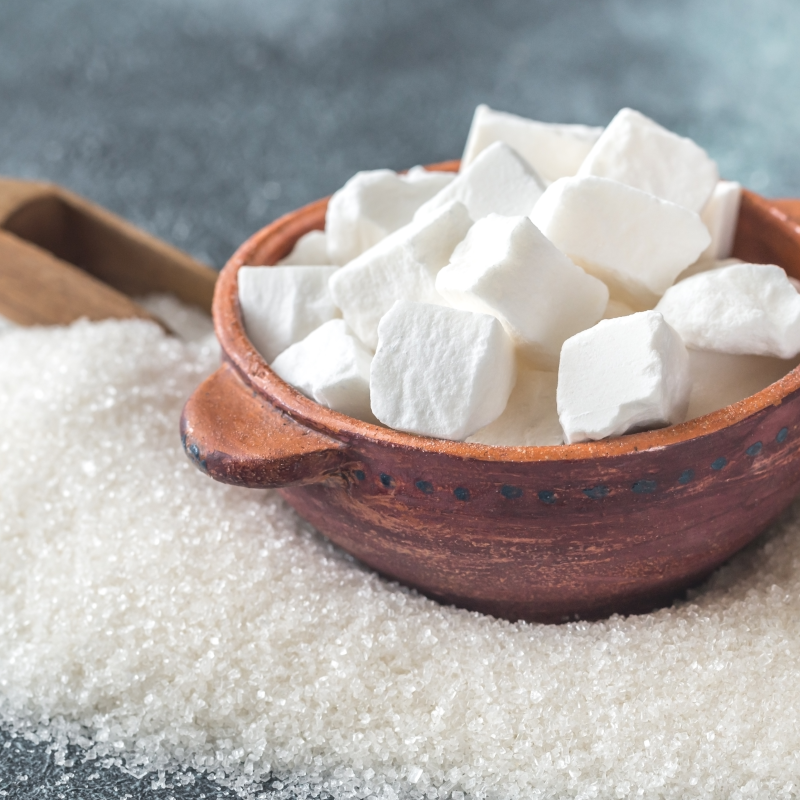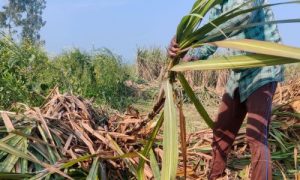Pakistan : Beet sugar merits a fresh impetus

Pakistan faces growing challenges like water scarcity and climate change, making sugar beet an attractive alternative to water-intensive sugarcane. Sugar beet requires less land and water, has a shorter growing season, and offers higher sugar content. However, its large-scale adoption requires government support, investment in processing infrastructure, and strategic policies to optimize land and water resources effectively.
The choice between beet sugar and cane sugar centres on maximising the productivity of two key natural resources: land and water. In Pakistan, over the last 25 years, this strategic option has often been the subject of intense debate, but it is now gaining new momentum due to population explosion, dwindling surface water availability, increasing groundwater depletion, rising, and the growing impacts of climate change. These challenges underscore the pressing need for a shift in agricultural practices and a reassessment of cropping patterns.
Globally, table sugar is derived from either sugar beet or sugarcane. Sugar beet, a root vegetable, thrives in temperate climates, but its improved cultivars now perform equally well in tropical and subtropical regions. Cultivated in over 50 countries, it accounts for 20 per cent of the world’s sugar output. Additionally, processing sugar beet yields bioethanol, molasses, pulp, and pectin.
In Pakistan, sugar beet contributes less than 1pc to total sugar production. In the 2022-23 season, 433,419 tonnes were processed, yielding 51,255 tonnes of sugar. This marks a notable rise from 2011-12 when only 18,216 tonnes of beet sugar were produced.
Sugar beet has a shorter crop duration of six to seven months compared to sugarcane’s 12 to 14 months and requires just 40 pc of the water used by sugarcane. With higher sugar content (15-20pc), and nearly the same per-hectare yield, sugar beet requires less land than sugarcane to produce the equivalent amount of sugar.
Due to its cost-effective harvest time, using sugar beet in conjunction with sugarcane would be an economical way to meet the country’s demand for the sweetener
To meet the annual 4pc rise in sugar demand, driven by population growth (2.55pc) and increasing per capita consumption (currently 26kg), sugarcane area has expanded from 0.99 million hectares in 2010-11 to 1.32m hectares in 2022-23, reflecting a 33.45pc rise.
If this trend continues, the pressing questions remain: where will additional land and water for this water-intensive crop — second only to rice — come from in the future, and at what cost to other crops, especially when water shortage is growing across the country, particularly in Sindh. It is time to replace high-delta crops like sugarcane, at least partially, with low-delta crops like sugar beet.
Beet sugar production began in Khyber Pakhtunkhwa in 1963, where over time five sugar mills added beet processing lines into their plants. However, these mills are now almost non-operational due to the declining availability of sugarcane — a primary feedstock — in their respective areas driven by urbanisation, subsistence farming, shifts to high-value vegetables, and farmers’ preferences for making gur (jaggery).
Nevertheless, sugar beet cultivation in Punjab has expanded to 11,375 acres in 2022-23, according to the Punjab Crop Reporting Services. The reported crop yield of 86.6 tonnes per hectare (in Punjab), duly verified by local farmers, is particularly impressive.
Since the government support (indicative) prices for sugarcane and sugar beet are almost equal, yet, the production cost for sugar beet is significantly lower, farmers earn relatively higher profits from cultivating sugar beet. Additionally, its shorter crop duration enables farmers to grow an additional crop within the same year.
Over the last three years, electricity tariffs for tubewells have increased four times, pushing farmers to adopt low delta crops. However, being a single-buyer market (sugar mills), farmers have to rely on mills to offer buy-back contracts, and provide seed, fertilisers, pesticides and advisory services, on deferred payment. Such arrangements have been a common practice in the sugar sector to develop catchment areas for newly established sugar mills.
In previous years, the government undertook trials in various regions of Sindh (particularly lower Sindh), and Punjab, confirming the suitability of these areas for commercial sugar beet cultivation. However, without a well-defined government policy to promote sugar beet — the National Sugar Policy 2009-10 only briefly touched upon it — and a lack of long-term strategic planning, its cultivation has struggled to gain traction.
During the 2000s and early 2010s, sugar mills were somewhat interested in processing sugar beet due to inadequate sugarcane acreage to meet the growing country’s demand for sugar. Nevertheless, as significant cotton area was replaced by sugarcane in the past decade, the sector’s focus shifted away from sugar beet, largely because of the numerous challenges involved.
These include the need for new investments in beet-processing lines, establishing a reliable sugar beet supply chain through contract farming, timely processing of beet to minimise post-harvest losses, and high energy costs.
Although beet sugar production is more efficient and cost-effective than cane sugar, it lacks the energy benefits of bagasse — a by-product of sugarcane processing used for generating electricity and steam. Instead, it depends on expensive external energy sources like gas, coal, or furnace oil, which drives up production costs by approximately Rs10-15 per kilogram of sugar, which is partially offset by the sale of pulp — a by-product used in cattle feed.
It is worth noting that cane sugar mills always have surplus bagasse at the end of the crushing season. Many of them use it to operate their captive power plants, either to supply electricity to other industrial concerns within the same premises or to sell it to the national grid as independent power producers.
Due to such surplus bagasse, the prospects of using sugar beet as a supplement to or in conjunction with sugarcane are very promising and economical for sugar production. Since sugar beet is harvested in mid-April to mid-June, it can help operate sugar mills for an additional 30 to 60 days, after the sugarcane crushing season ends.
Some government reports raised concerns that expanding sugar beet cultivation might cannibalise wheat acreage. This risk is plausible if the country promotes sugar beet cultivation while maintaining the current sugarcane area. The optimal approach would be to encourage existing sugarcane farmers to replace some of their crops with sugar beet and then gradually increase it, aiming for a 50:50 ratio between sugarcane and sugar beet in the country.
Imported sugar beet seed (from Germany) is another factor. For sowing an acre, two kilograms of seed is required, and its cost is several times lower than what our maize, rice (hybrid), potato, and vegetable farmers are currently paying for imported seeds.
In conclusion, sugarcane, like wheat, is a political crop. However, it is high time to take rational measures to maximise the economic value of land and water, from a long term perspective. Nevertheless, large-scale beet sugar production is unattainable without government policy support, coupled with targeted incentives and a well-rounded strategy that develops all segments of the value chain.
Khalid Wattoo is a farmer and a development professional, and Dr Waqar Ahmad is a former Associate Professor at the University of Agriculture, Faisalabad.
To read more about the news about the Sugar Industry continue reading Agriinsite.com
Source Link : https://www.dawn.com/news/1856296/agriculture-beet-sugar-merits-a-fresh-impetus
















